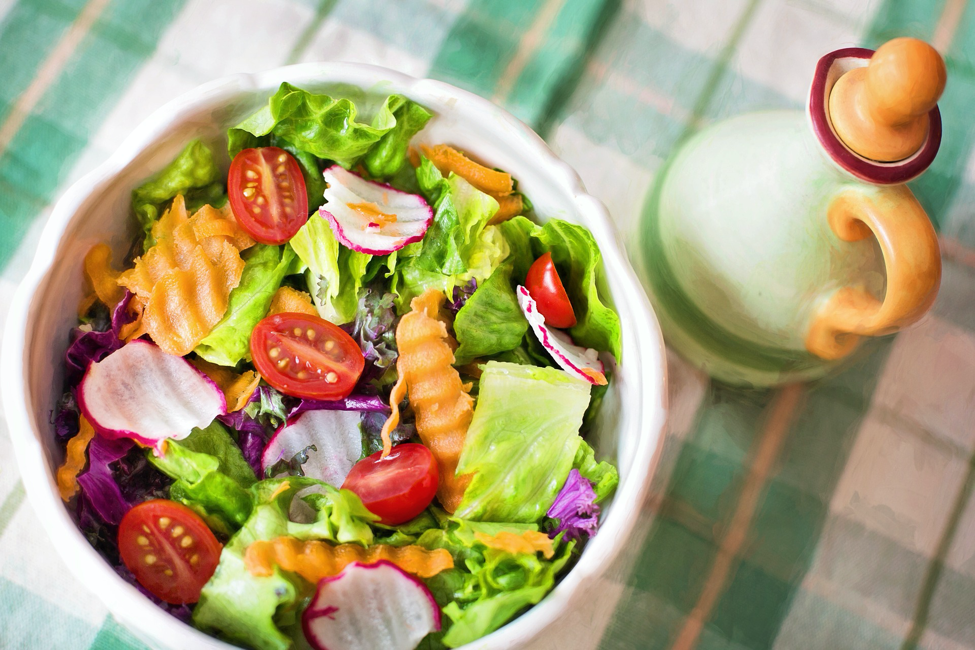We all know how important greens are in our diets. But salads can often turn out disappointing when we make them ourselves. Whereas, a simple salad bowl from your favorite restaurant can taste amazing. Ever wonder what makes this difference? Some very basic steps can turn your homemade salad from boring to wow!
In this article we have gathered our top 20 tips, so you can make a chef’s salad dish, at home, by yourself. And if you are a fan of plant-based recipes, The Picky Eater is what you should explore to make healthy eating simple, flavorful, and enjoyable!
Pick Your Greens Wisely
The quality of your ingredients makes a huge difference in your salad. Hence it is important to know how to choose the right greens for your salad bowl. Even if you are following the best salad recipe, it won’t taste as good if you don’t use quality ingredients.
So, how do you pick the good greens? Check and avoid any signs of brown or dark spots, wilting or yellowing of leaves. Pick the ones that look fresh and crunchy. Leafy vegetables like cabbage or lettuce should not be saggy, but firm, as this is a sign of freshness.
Wash them Right
This may sound weird, but yes, you may be washing your veggies wrong, and this may be the reason why your salad doesn’t taste good. So what is the right way? Start by trimming your veggies. Then put them in a bowl and add some water.
Give them a rinse and let them sit for a couple of minutes. This will make sure that all the dirt will be washed away and sink to the bottom of the bowl. Then take out the vegetables, throw out the water, add some fresh water and wash the veggies again. Repeat if necessary. If you just soak them once, as most people do, you might not get rid of all the dirt. So a more thorough cleaning might be necessary.
Less can be More
When it comes to salads, there are so many possibilities to get creative. Even with very limited ingredients, such as fennels, potatoes, and roots, you can create a perfectly delicious salad bowl. Fewer ingredients? Time to get creative with the dressing. Customize your dressing to fit your taste and voilà! We can assure you that you won’t feel like something is missing in your salad.
Raw shouldn’t be the Law
No law says you can only use raw vegetables in your salad. You can always prepare them in a way to fit your taste and liking. Here are a few ideas you might want to try out:
Pickle: Pickled vegetables can give that aroma and burst of flavors you want in your salad. So adding some pickled mushrooms, rhubarbs, chilis, and red onions can be an amazing addition to your healthy bowl.
Roast: Roasted veggies like carrots, cabbage, broccoli and mushrooms can provide an extra sweetness to your salad and make it taste heavenly.
Grill: Grilled vegetables will give a smoky and aromatic flavor, and when it is paired with the right dressing, it creates the perfect combination for your salad bowl.
Balance is Key
Yes, you can add a lot of different ingredients to your salad, but it is important to maintain a balance. Too much can make your salad feel too heavy. If you don’t want your salad to be too sweet, you need to make sure you balance it with a proper amount of salty or bitter ingredients.
Add Some Toppings
Just because it is a salad, it doesn’t mean that you have to use greens only. You can top it off with croutons, fried onion rings, crispy chicken, bacon and so much more. The only thing you should keep in mind is not to use a heavy topping if your salad is supposed to be light.
Go Nuts
Want an extra crunch in your salad? Adding roasted nuts like pistachios, walnuts, almonds or cashews adds a wonderful aroma and a rich, buttery taste while giving you that crisp that you want. Toss the nuts around in some oil and salt, and then roast them at 325° until they turn dark, or give off a flavorful aroma.
Add Nuts in Your Dressing
Along with your dressing being nutritious and tasty, it could be crunchy too! You can chop different nuts and add them to your dressing, to make it more scrumptious.
Ice it Up!
For the crunchiest root vegetable salad, soak the chopped root vegetables in a large bowl of ice water. Instead of oxidizing or drying, it becomes even more crispy. This step can be done up to 6 hours in advance and is ideal if you are preparing for a larger dinner party.
Use Mandolins
Sure, a sharp knife is fine, but a mandoline cutter guarantees uniformity. They can be used to make even slices for gratin potatoes, sliced carrots, for quick garden salads, or sliced eggplants, for parmesan cheese or grills. A good mandoline can cut soft tomatoes cleanly, without crushing or tearing the skin. So using a mandoline can be a real game-changer.
Try A New Vinaigrette Formula
The old vinaigrette formula of 1 part vinegar to 3 parts oil, is so old school. Try out some of our new formulas and see what a difference it can make for your salad.
- Olive oil + apple cider vinegar + maple syrup
- Yogurt + lime + harissa
- Mayonnaise + rice vinegar + gochujang and grated garlic
-
Neutral oil + rice vinegar + miso and grated ginger
Consider Adding Two Kinds of Vinegar
All kinds of vinegar taste different. And some people prefer one over the other. So incorporating two or three different kinds of vinegar, like apple cider and white balsamic, you can obtain a variety of flavors in the same bowl.
Bring in the Water
Water is a universal solvent for a reason! When you eat your salad, you want to be able to taste every ingredient. That is what you would call a perfect salad bowl. So add water and not more dressing, if you want a more moist salad, to bring everything together. But be careful not to add too much water, otherwise, all the flavors will become bland.
Add to your Taste
Even Though you will find different recipes online telling you to add a given amount of seasonings to your meal, it is important to remember that everyone has different taste preferences. So every time you add salt or season your salad, taste it.
If it’s not enough, add a little more, and taste again until you reach the level of seasoning that you prefer. The trick is to use small amounts at a time so that you can add more later if you feel like it.
Did you Say “Spray”?
Using spray bottles to store your dressings, or lemon juice, allows you to spread an even layer of it on your salad when you feel like it. It also prevents the risk of using too much dressing and making your salad soggy or moist. It also helps you to thoroughly mix the salad and apply the dressing gradually. It allows you to have more control over the amount of moisture in your salad.
Grate it Away
The Microplane grater allows you to transform your ingredients into snow-soft flakes that stick to the vegetables and flavor the finished salad, without stealing the show. Try grating and topping your salad with hard-boiled eggs, roasted nuts, citrus peels, bottarga or hard cheese.
Dress to Impress
The dressing should be of the perfect consistency so that every leaf is covered, without becoming soggy. So what is the secret? Let’s start with a really big bowl. It should be at least 25% larger than the finished salad. Get rid of the tongs. Use your hands to mix everything well.
Dress the Bowl
This is a very important part. You should always pour the dressing around your bowl, and not directly into the salad. Let the dressing drip down the greens, and then use your hand to mix them. This way, you can avoid adding too much dressing to your salad.
The Right Bowl
Even if you are only making a smaller amount of salad, a large bowl is better. Use a large bowl (at least 3 inches wide and 9 inches deep) to have better control over what and how much you’re adding to your salad, to ensure you get a well-balanced salad with the correct vegetable-grain ratio. Your oversized bowl also helps you spread the dressing evenly.
The Perfect Salad Does Exist
See how these basic steps can make a big difference in how you prepare your salad? Choosing better ingredients, tasting as you go, and using the right bowl can make all the difference. Now that you have all our secret tips for the perfect salad bowl, try it out and watch the magic happen. Bon Appetit!





